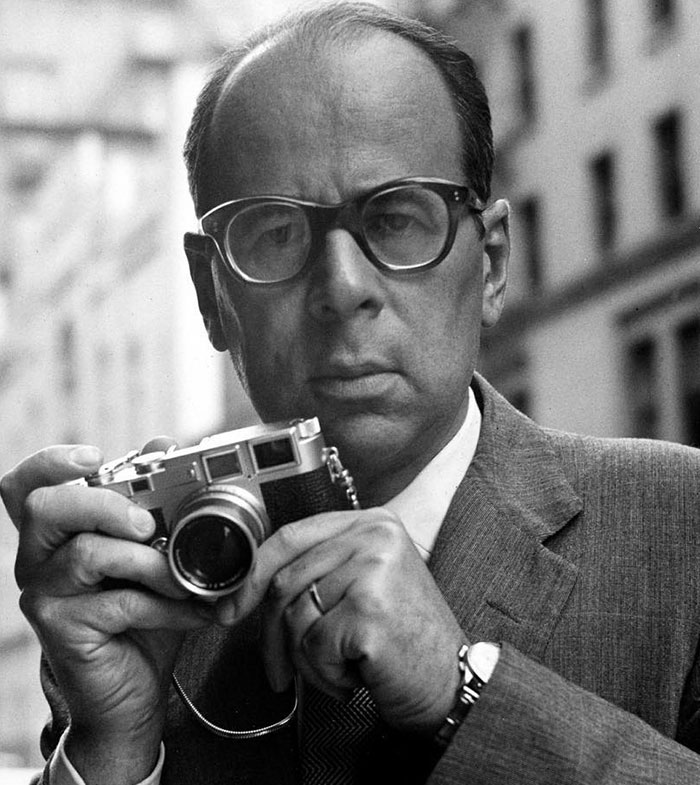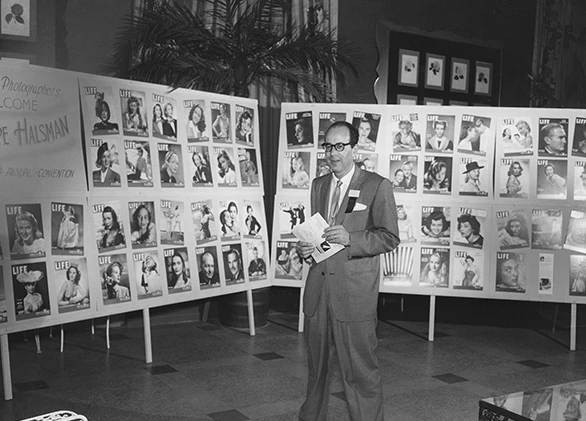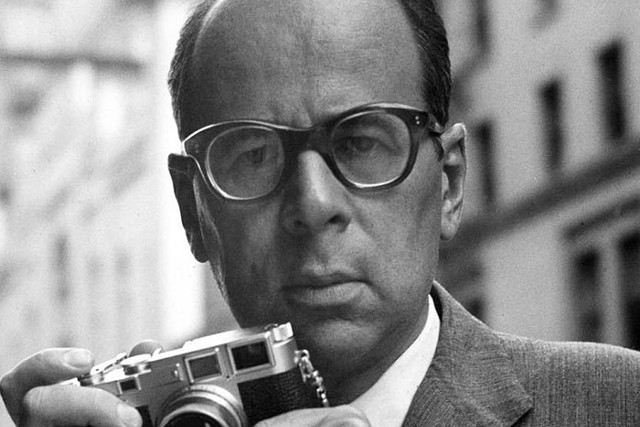Early Life
Philippe Halsman was born on May 2, 1906, in Riga, Russian Empire (now Latvia), in a Jewish family. His parents were Morduch (Mark) Halsman and Ita Grintuch. By profession, his father was a dentist and his mother was a principal at a primary school.
He completed high school in 1924 and went to Dresden, Germany, to study electrical engineering.
At the age of 15, he became interested in photography when he found his father’s old camera in a store. He bought a photographic book to learn more about it and took many pictures of his only sister, Luba.

In 1928, he was arrested and convicted of the murder of his father while vacationing in the Austrian Alps. Despite serving a 10-year sentence, he was released in 1930 on the condition that he leave Austria forever and never return.
Personal Life
In 1934, Philippe Halsman met a young photographer, Yvonne Moser, in Paris. Moser started working for him as an apprentice. They both fell in love with each other and got married in 1937. They were blessed with two daughters, Irene (born in 1939) and Jane (born in 1941).
Philippe Halsman Career
In 1930, Philippe moved to France and began working for fashion magazines like Vogue. Eventually, he became known as one of the best portrait photographers in town because he took crisp, cropped pictures instead of the old blurry ones.
In 1934, he opened his portrait studio in Montparnasse and developed the dual-lens camera that he used to take pictures of artists and writers such as André Malraux, André Gide, Le Corbusier, and Marc Chagall.

He took many portraits with his homemade binocular reflex camera. These portraits were his first step toward success and fame. But what opened the door for him was working with Elizabeth Arden, who owns a beauty product company. He had also worked for many other popular American magazines such as Esquire, Paris Match, Look, and Saturday Evening Post.
Elizabeth Arden used a photo of model Constance Ford in her Victory Red lipstick ad. This was his big break in America and he soon had more chances to succeed.
When Germany invaded France, he fled to Marseilles. With the help of his friend Albert Einstein, he was able to get an emergency US visa and immigrate to the US.
When he met Salvador Dali, a Spanish surrealist painter, in 1941, they had a similar idea about art, so they worked together for 37 years and took many bizarre pictures.
LIFE Magazine Cover
In 1942, he began writing about women’s hats for Life Magazine. On the first cover, he photographed a model wearing a Lilly Dache hat. After that, he did a great job for Life, especially when the magazine needed a great cover. Hereafter, he filmed a 101 Life cover to feel better about himself.

Besides Life, he has written covers and articles for several major American magazines. This brought him fame and introduced him to famous people of the time.
President of ASMP
In 1945, Philippe Halsman became the first President of the American Society of Magazine Photographers (ASMP). He continuously fought for the creative and professional rights of photographers.
The Idea Of JUMPOLOGY
While filming two comedians in the air, the idea of ”Jumpology” came to him. This sparked interest in him and led to more jobs photographing famous people such as the Ford family, Marilyn Monroe, and Richard Nixon among others. He has won many awards for his outstanding photography and his work has been exhibited in many exhibitions around the world.

In 1952, he had two photo shoots with John F. Kennedy. One of the photos was used on the cover of the first edition of his book, “Profile in Courage”, and the other was used publicly by a Senator candidate.
In 1954, Dali and Halsman published a book, “Dali’s Mustache”, a collection of their collaborations. It featured 36 images of Dali’s distinctive mustache.
In 1959, in his book, “Philippe Halsman’s Book of Jumps”, he collected 178 photos of famous people jumping and talking about jumping.
In 1961, he published a book, “Halsman on the Creation of Photographic Ideas”. He showed people how to take extraordinary pictures following six rules.
The poster for the 1991 film, “The Silence of the Lambs”, was based on the duo’s “In Voluptas Mors”. The poster for the 2005 film, “The Descent”, was also based on “In Voluptas Mors”.
Death
He died on June 25, 1979, in New York, US, at the age of 73.
Awards & Achievements
- In 1940, he received the Art Directors Club Medal for a photograph of Constance Ford used in an advertisement for Elizabeth Arden
- In 1958, he was named one of the top ten photographers in the world by Popular Photography magazine
- In 1967, he received the Golden Plate Award from the American Academy of Achievement
- In 1975, the ASMP awarded him a Lifetime Achievement Award
- His sad image of Albert Einstein appeared on a US postage stamp in 1966, and on the cover of Time Magazine in 1999 with the phrase, “Person of the Century”
Short Bio
| Full Name | Philippe Halsman |
| Date of Birth | 2 May 1906 |
| Birth Place | Riga, Russian Empire (Latvia) |
| Date of Death | 25 June 1979 |
| Death Place | New York, US |
| Gender | Male |
| Nationality | American |
| Ethnicity | Jewish |
| Period | Surrealism |
| Age | 73 Years Old |
| Profession | Photographer |
| Zodiac Sign | Taurus |
| Parents | Father: Morduch Halsman Mother: Ita Grintuch |
| Wife | Yvonne Moser |
| Children | Irene and Jane |
Philippe Halsman’s Social Media
Instagram: @philippe_halsman_official
Website: https://philippehalsman.com/

